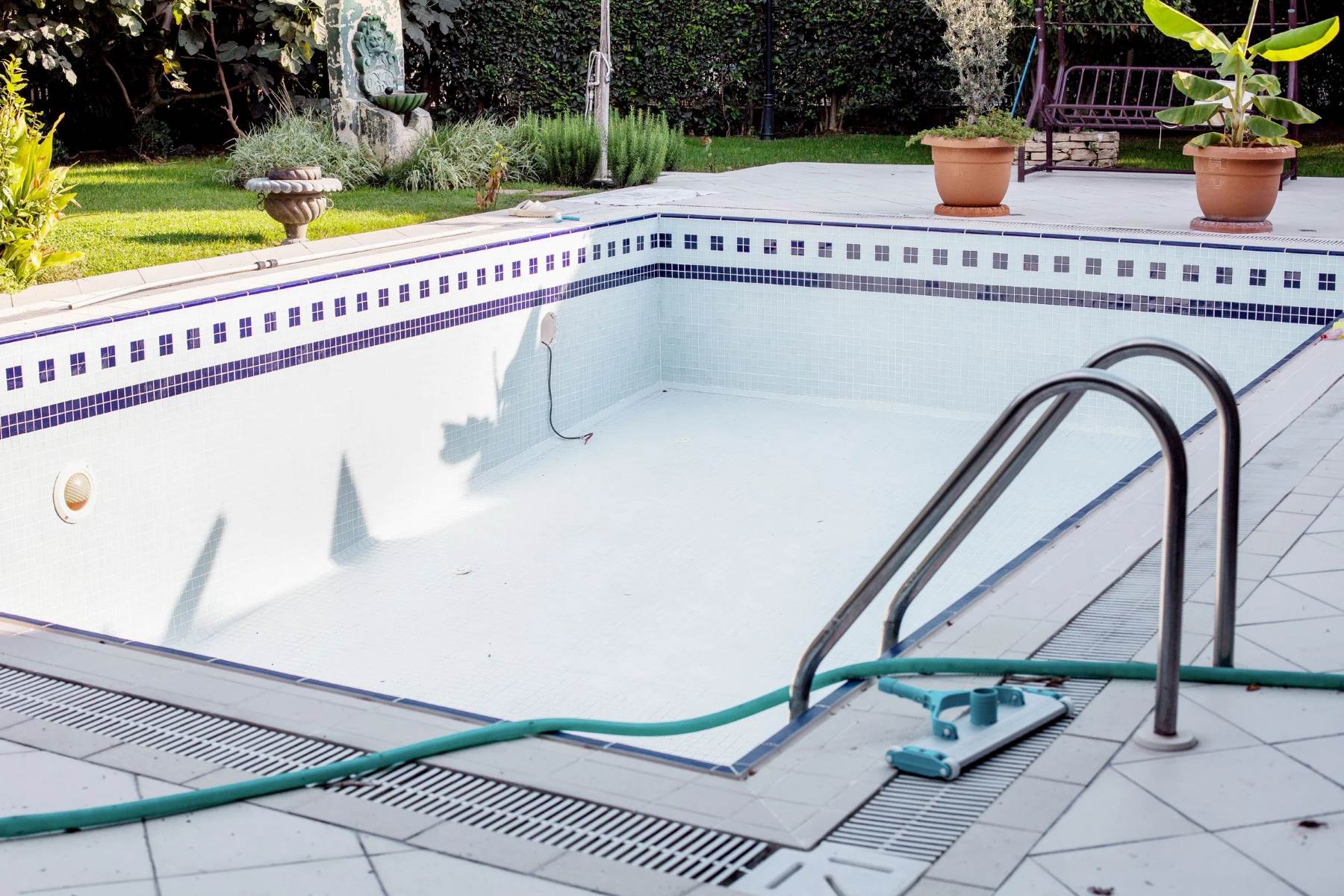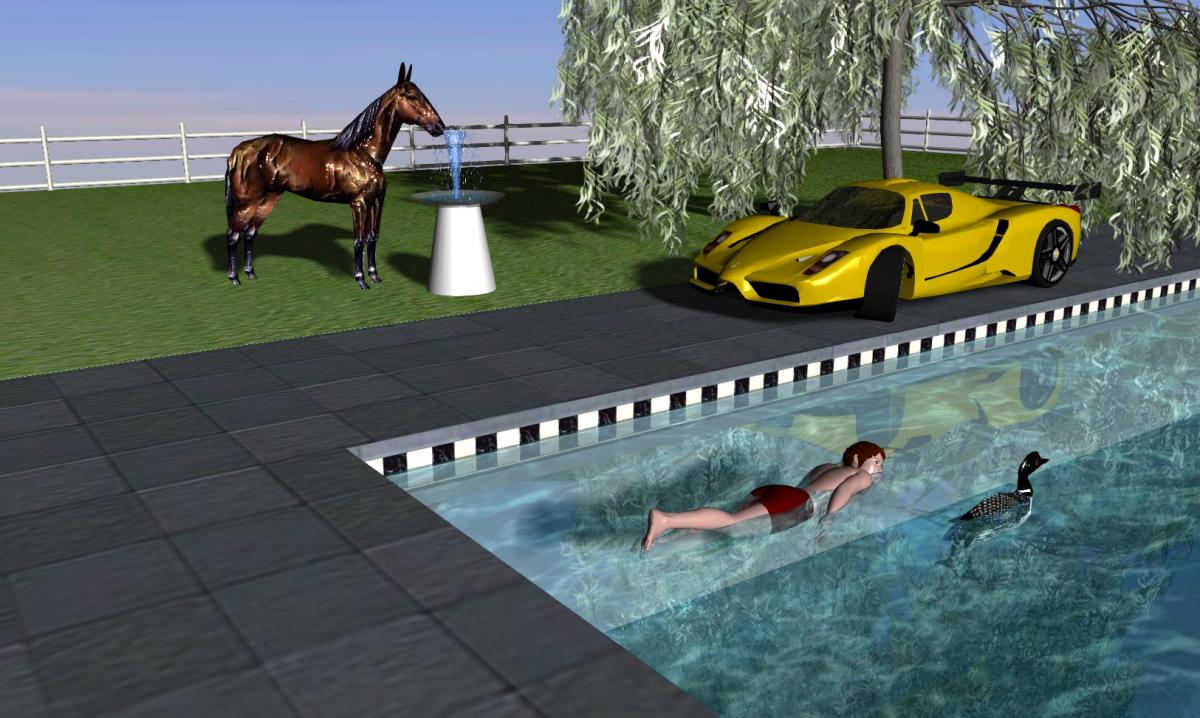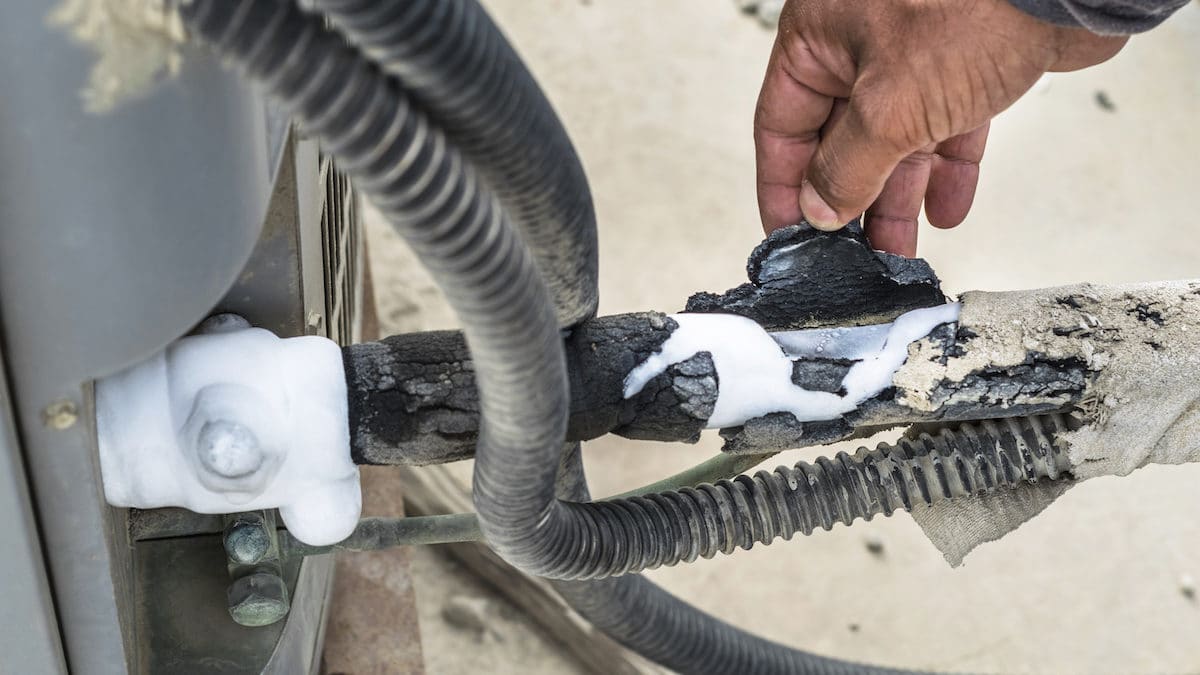Home>Gardening & Outdoor>Outdoor Recreation & Activities>How To Find Swimming Pool Leaks


Outdoor Recreation & Activities
How To Find Swimming Pool Leaks
Published: February 17, 2024
Learn how to detect and fix swimming pool leaks with our expert guide. Keep your outdoor recreation and activities worry-free.
(Many of the links in this article redirect to a specific reviewed product. Your purchase of these products through affiliate links helps to generate commission for Storables.com, at no extra cost. Learn more)
Introduction
A pristine swimming pool is a source of joy and relaxation, offering a refreshing escape from the hustle and bustle of daily life. However, the tranquility of your aquatic oasis can be disrupted by an unexpected problem: a leak. A leaking swimming pool not only leads to water wastage but also poses the risk of structural damage and increased maintenance costs. Therefore, it's crucial to promptly identify and address any leaks to ensure the longevity and enjoyment of your pool.
In this comprehensive guide, we will delve into the various aspects of swimming pool leaks, equipping you with the knowledge and techniques necessary to detect, diagnose, and resolve these issues. Whether you're a seasoned pool owner or a novice enthusiast, understanding the signs, causes, and solutions related to pool leaks is essential for preserving the integrity and functionality of your aquatic haven.
By the end of this article, you will be empowered to confidently tackle the challenge of identifying and addressing swimming pool leaks, allowing you to safeguard your investment and continue relishing the pleasures of your aquatic retreat. So, let's dive in and explore the world of swimming pool leaks, unraveling the mysteries that lie beneath the shimmering surface.
Key Takeaways:
- Keep an eye out for signs of a swimming pool leak, like unexplained water loss, increased water bills, and soggy areas. Early detection helps prevent damage and water wastage.
- To fix a swimming pool leak, use methods like patching, plumbing repairs, and professional help. Prompt action preserves the pool’s integrity and saves water.
Read more: How To Find A Leak In A Swimming Pool Liner
Signs of a Swimming Pool Leak
Detecting a leak in your swimming pool can be a challenging task, especially if the water loss is gradual. However, being attuned to the subtle signs of a potential leak can help you address the issue before it escalates into a major problem. Here are the key indicators that may point to a swimming pool leak:
-
Unexplained Water Loss: A noticeable drop in the water level of your pool, especially when it exceeds the normal evaporation rate, is a strong indication of a potential leak. Keep a close eye on the water level and monitor any unexplained fluctuations.
-
Increased Water Bills: If your water bills have unexpectedly surged without a corresponding increase in usage, it could signify a leak in your pool. Keep track of your water consumption and bills to identify any abnormal patterns.
-
Cracks and Structural Damage: Inspect the pool's structure for any visible cracks, fissures, or damage. These imperfections can serve as entry points for water leakage and should be promptly addressed to prevent further deterioration.
-
Soggy or Wet Areas: Pay attention to the surrounding areas of the pool, such as the deck or lawn. If you notice consistently damp or soggy patches, it could indicate that water is seeping out from the pool, signaling a potential leak.
-
Decreased Chemical Effectiveness: A leak can dilute the chemical balance of the pool water, leading to difficulties in maintaining the appropriate chemical levels. If you find it challenging to stabilize the water chemistry despite regular maintenance, a leak could be the underlying cause.
-
Lush Grass or Weeds Near the Pool: Excessive moisture from a leak can promote the growth of lush grass or weeds in the vicinity of the pool. Keep an eye out for unusually vibrant vegetation, as it may signal the presence of a leak.
-
Visible Sinkholes or Settling Soil: In severe cases, a pool leak can cause the surrounding soil to settle or form sinkholes due to the escaping water. Inspect the area around the pool for any unusual depressions or soil irregularities.
By remaining vigilant and attuned to these signs, you can proactively identify and address potential leaks in your swimming pool, preserving its integrity and minimizing water wastage. Now that we've explored the signs of a swimming pool leak, let's delve into the essential steps to pinpoint and address these elusive water escapes.
Steps to Find a Swimming Pool Leak
Detecting a leak in a swimming pool requires a systematic approach and keen observation. Follow these essential steps to pinpoint the elusive source of the leak:
-
Visual Inspection: Begin by visually examining the pool and its surroundings for any visible signs of leakage. Look for cracks, fissures, or damage in the pool's structure, as well as wet spots on the ground near the pool. Additionally, inspect the pool equipment, including the pump, filter, and pipes, for any signs of water seepage or moisture.
-
Dye Test: Conduct a dye test to identify leaks in the pool's structure. Turn off the pool's filtration system and carefully drop a small amount of leak detection dye near suspected areas, such as cracks or seams. Observe the movement of the dye, as it will be drawn towards the source of the leak, providing valuable insight into the location of the problem.
-
Bucket Test: Perform a bucket test to differentiate between evaporation and actual water loss. Fill a bucket with pool water and place it on the pool step or bench, ensuring that the water level inside the bucket matches the pool water level. Mark the water levels inside the bucket and on the pool. After 24 hours, compare the water loss in the bucket to that of the pool. If the pool loses more water than the bucket, it indicates a potential leak.
-
Pressure Test: Utilize a pressure testing kit to assess the integrity of the pool's plumbing system. By isolating specific sections of the plumbing and pressurizing them, you can identify any leaks or pressure drops that may indicate a problem. This method is particularly effective for detecting leaks in underground pipes and fittings.
-
Professional Inspection: If the above methods do not reveal the source of the leak, consider enlisting the expertise of a professional pool technician. These professionals possess specialized equipment, such as acoustic listening devices and thermal imaging cameras, to pinpoint leaks with precision. Their experience and diagnostic tools can uncover hidden leaks that may elude standard detection methods.
By diligently following these steps, you can enhance your ability to identify and address swimming pool leaks, preserving the structural integrity of your pool and minimizing water wastage. Remember, early detection and prompt repair of leaks are essential for maintaining the functionality and longevity of your aquatic retreat.
Common Causes of Swimming Pool Leaks
Understanding the common causes of swimming pool leaks is essential for proactive maintenance and timely intervention. By familiarizing yourself with these potential culprits, you can effectively mitigate the risk of leaks and preserve the structural integrity of your pool. Here are the prevalent factors that can lead to swimming pool leaks:
-
Structural Damage: Over time, the structural components of a swimming pool, such as the concrete shell, tiles, or grout, can deteriorate due to age, environmental factors, or improper installation. This degradation can result in cracks, fissures, or gaps that compromise the watertight integrity of the pool, leading to leaks.
-
Faulty Plumbing: The plumbing system of a pool, including pipes, fittings, and valves, is susceptible to wear and tear. Corrosion, joint failures, or damage from external factors can cause leaks in the plumbing infrastructure, resulting in water loss and potential damage to the surrounding areas.
-
Liner Tears or Deterioration: Vinyl-lined pools are vulnerable to tears, punctures, or deterioration of the liner material. Harsh weather conditions, sharp objects, or improper maintenance can contribute to the degradation of the liner, leading to leaks that necessitate prompt repair or replacement.
-
Skimmer or Return Line Leaks: The skimmer and return lines play a crucial role in maintaining the circulation and filtration of pool water. However, these components can develop leaks due to seal failures, cracks, or detachment from the pool structure, resulting in water seepage and potential damage to the surrounding areas.
-
Ground Movement: Shifting soil, ground settlement, or seismic activity can exert pressure on the pool structure, leading to stress fractures, shifts in the pool shell, or damage to plumbing lines. These movements can compromise the integrity of the pool, causing leaks that require immediate attention.
-
Equipment Malfunction: The pool's filtration system, pump, or other mechanical components can experience malfunctions or seal failures, leading to water leaks. Additionally, improper installation or inadequate maintenance of these systems can contribute to water loss and potential damage to the pool infrastructure.
-
Environmental Factors: External elements, such as tree roots, invasive vegetation, or animal activity, can inadvertently damage the pool structure or plumbing, leading to leaks. It's essential to assess the surrounding environment and take preventive measures to mitigate the impact of these factors on the pool's integrity.
By recognizing these common causes of swimming pool leaks, you can adopt a proactive stance in safeguarding your pool against potential water loss and structural damage. Regular inspections, timely repairs, and adherence to proper maintenance practices are instrumental in mitigating the risk of leaks and preserving the pristine condition of your aquatic sanctuary.
Fixing a Swimming Pool Leak
Addressing a swimming pool leak promptly is crucial to prevent further water loss and potential damage to the pool structure. Once the source of the leak has been identified through thorough inspection and diagnostic tests, it's essential to initiate the repair process without delay. The specific approach to fixing a swimming pool leak depends on the nature and location of the leak, as well as the type of pool construction. Here are the common methods employed to rectify swimming pool leaks:
Read more: How To Fix A Leaking Swimming Pool
Patching and Sealing
For minor leaks in the pool's structure, such as small cracks or fissures in the concrete shell or tile grout, patching and sealing are effective solutions. Epoxy-based sealants or specialized pool patching compounds can be applied to the affected areas to create a watertight barrier, preventing further water seepage. This approach is suitable for localized leaks and can be performed without extensive disruption to the pool area.
Liner Repair or Replacement
In the case of vinyl-lined pools, tears, punctures, or deterioration of the liner require immediate attention. Small tears can be patched using vinyl repair kits, while extensive damage may necessitate the replacement of the entire liner. Properly securing the liner and ensuring a seamless, watertight fit is essential to prevent leaks and maintain the structural integrity of the pool.
Plumbing Repairs
Leaks in the pool's plumbing system, including pipes, fittings, or valves, demand meticulous repairs to restore the integrity of the infrastructure. Depending on the location of the leak, professional plumbers or pool technicians may need to access the underground pipes or fittings to conduct repairs. This may involve excavation and replacement of damaged components to eliminate the source of the leak and ensure the efficient circulation of water.
Skimmer and Return Line Maintenance
Addressing leaks in the skimmer or return lines requires inspecting the components for cracks, seal failures, or detachment from the pool structure. Replacing damaged seals, resealing connections, or realigning the components can effectively resolve leaks in these critical elements of the pool's circulation system. Proper maintenance and periodic inspections of these components are essential to prevent future leaks.
Read more: How To Find A Leak In Pool Plumbing
Professional Intervention
In complex cases where the source of the leak is elusive or requires specialized expertise, seeking professional intervention is advisable. Experienced pool technicians equipped with advanced diagnostic tools can pinpoint hidden leaks and execute targeted repairs with precision. Their proficiency in utilizing acoustic listening devices, thermal imaging cameras, or pressure testing equipment ensures comprehensive leak detection and effective resolution.
By employing these targeted repair methods and enlisting professional assistance when necessary, you can effectively address swimming pool leaks and restore the integrity of your aquatic haven. Timely and meticulous repairs not only prevent water wastage but also contribute to the longevity and functionality of your pool, allowing you to continue enjoying its refreshing benefits for years to come.
Conclusion
In conclusion, maintaining a leak-free swimming pool is essential for preserving its functionality, structural integrity, and the environment. By being vigilant for signs of leaks, such as unexplained water loss, increased water bills, and structural damage, pool owners can proactively address potential issues before they escalate. The systematic approach to detecting leaks, including visual inspections, dye tests, bucket tests, and pressure tests, equips individuals with the necessary tools to pinpoint elusive leaks and initiate timely repairs.
Understanding the common causes of swimming pool leaks, such as structural damage, faulty plumbing, and environmental factors, empowers pool owners to adopt preventive measures and adhere to proper maintenance practices. By addressing these underlying factors, the risk of leaks can be significantly mitigated, ensuring the long-term sustainability of the pool.
When it comes to fixing a swimming pool leak, employing targeted repair methods, such as patching and sealing, liner repair or replacement, plumbing repairs, and skimmer and return line maintenance, is crucial for restoring the pool's watertight integrity. Additionally, seeking professional intervention in complex cases ensures comprehensive leak detection and effective resolution, safeguarding the pool against persistent or hidden leaks.
Ultimately, by promptly addressing swimming pool leaks, pool owners contribute to water conservation efforts and minimize the environmental impact of unnecessary water loss. Preserving the pristine condition of swimming pools not only enhances the enjoyment and safety of recreational activities but also underscores a commitment to responsible water stewardship.
In essence, the journey to finding and fixing swimming pool leaks is a testament to the dedication and care invested in maintaining a cherished aquatic retreat. By embracing a proactive and attentive approach, pool owners can uphold the allure and sustainability of their pools, ensuring that these aquatic havens continue to serve as sources of relaxation, recreation, and rejuvenation for years to come.
Frequently Asked Questions about How To Find Swimming Pool Leaks
Was this page helpful?
At Storables.com, we guarantee accurate and reliable information. Our content, validated by Expert Board Contributors, is crafted following stringent Editorial Policies. We're committed to providing you with well-researched, expert-backed insights for all your informational needs.














0 thoughts on “How To Find Swimming Pool Leaks”